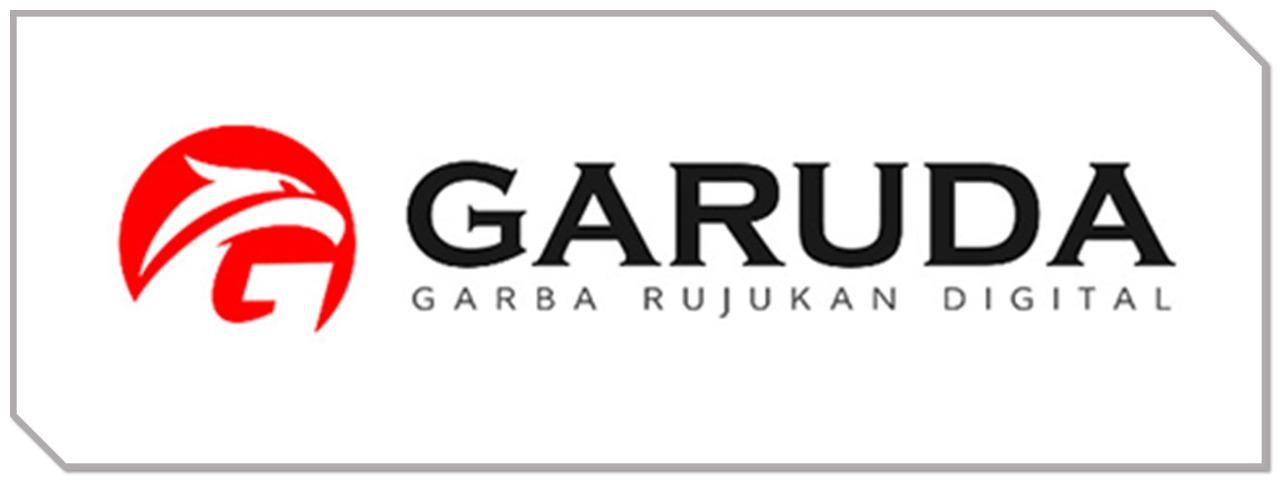Analisis Tingkat Loyalitas Konsumen Generasi Z terhadap Marketplace di Indonesia Menggunakan Metode NPS (Net Promoter Score)
DOI:
https://doi.org/10.30588/jmt.v1i01.1222Keywords:
Consumer loyalty, Marketplace, Net Promoter Score (NPS), Z GenerationAbstract
Research on consumer loyalty, especially in generation Z, is the last interesting research both in Indonesia and other countries. Loyalty is an important part of the company because it becomes a positive and very profitable behavior for the company. The purpose of this study is to measure the level of consumer loyalty to generation Z in Indonesia. The object of the study took seven marketplace sites that are often used by generation Z in Indonesia. The marketplaces are (1) Shopee, (2) Lazada, (3) Tokopedia, (4) Zalora, (5) Bukalapak, (6) Blibli.com, and (7) Instagram. The method used to measure the level of consumer loyalty is NPS (Net Promoter Score). Surveys use random sampling. A total of 153 respondents gave answers using google forms. The results showed that there were only 2 marketplaces that were included in the loyal category, namely Shopee, and Tokopedia, while the rest, namely Lazada, Zalora, Bukalapak, Blibli.com, and Instagram, were included in the non-loyal category.References
Alhaija, A.S.A., Yusof, R.N.R., Hashim, H., & Jaharuddin, N.S. (2018). Determinants of Customer Loyalty: A Review and Future Directions. Australian Journal of Basic and Applied Sciences, 12(7), 106-111.
Ayuni, R.F. (2019). The Online Shopping Habits and E-Loyalty of Gen Z as Native in the Digital Era. Journal of Indonesian Economy and Business, 34(2), 168-184.
Baquero, A. (2022), Net Promoter Score (NPS) and Customer Satisfaction: Relationship and Efficient Management. Sustainability, 14, 1-19.
Bilgihan, A., Madanoglu, M., & Ricci, P. (2016). Service Attributes as Drivers of Behavioral Loyalty in Casinos: The Mediating Effect of Attitudinal Loyalty. Journal of Retailing and Consumer Services, 31, 14-21.
Bowen, J.T., & McCain, S.L.C. (2015). Transitioning Loyalty Programs: A Commentary on The Relationship between Customer Loyalty and Customer Satisfaction. International Journal of Contemporary Hospitality Management, 27(3), 415-430.
Casidy, R. & Wymer, W. (2016). A Risk Worth Taking: Perceived Risk as Moderator of Satisfaction, Loyalty, and Willingness-to-Pay Premium Price. Journal of Retailing and Consumer Services, 32, 189-197.
Chang, H.H., Wang, Y.H., & Yang, W.Y. (2009). The Impact of E-service Quality, Customer Satisfaction and Loyalty on E-marketing: Moderating Effect of Perceived Value. Total Quality Management & Business Excellence, 20(4), 423-443.
Cong, L.C. (2016). A Formative Model of the Relationship Between Destination Quality, Tourist Satisfaction, and Intentional Loyalty: An Empirical Test in Vietnam. Journal of Hospitality and Tourism Management, 26, 50-62.
Cossío-Silva, F.J., Revilla-Camacho, M.A., Vega-Vázquez, M., & Palacios-Florencio, B. (2016). Value Co-creation and Customer Loyalty. Journal of Business Research, 69(5), 1621-1625.
Dwivedi, A., & Merrilees, B. (2016). Holistic Consumer Evaluation of Retail Corporate Brands and Impact on Consumer Loyalty Intentions. Australasian Marketing Journal, 24(1), 69-78.
El-Adly, M.I. & Eid, R. (2016). An Empirical Study of the Relationship between Shopping Environment, Customer Perceived Value, Satisfaction, and Loyalty in the UAE Malls Context. Journal of Retailing and Consumer Services, 31, 217-227.
Halik, A., & Nugroho, 2022, The Role of Consumer Delight Moderating the Effect of Content Marketing and Price Discount on Online Shopping Decision and Loyalty of Generation Z. Media Ekonomi dan Manajemen, 37(1), 35-54.
Han, H., Meng, B., & Kim, W. (2017). Bike-traveling as a Growing Phenomenon: Role of Attributes, Value, Satisfaction, Desire, and Gender in Developing Loyalty, Tourism Management, 59, 91-103.
Ipek, I., Aşkin, N., & Ilter, B. (2016). Private Label Usage and Store Loyalty: The Moderating Impact of Shopping Value. Journal of Retailing and Consumer Services, 31, 72-79.
Izogo, E.E. (2016). Antecedents of Attitudinal Loyalty in a Telecom Service Sector: The Nigerian Case. International Journal of Quality & Reliability Management, 33(6), 747-768.
Jiang, H., & Zhang, Y. (2016). An Investigation of Service Quality, Customer Satisfaction and Loyalty in China’s Airline Market. Journal of Air Transport Management, 57, 80-88.
Kandampully, J., Zhang, T., & Bilgihan, A. (2015). Customer Loyalty: A Review and Future Directions with A Special Focus on the Hospitality Industry. International Journal of Contemporary Hospitality Management, 27(3), 379-414.
Kim, M.K., Wong, S.F., Chang, Y., & Park, J.H. (2016). Determinants of Customer Loyalty in the Korean Smartphone Market: Moderating Effects of Usage Characteristics. Telematics and Informatics, 33(4), 936-949.
Kwenye, J.M., & Freimund, W. (2016). Zambian Domestic Tourists’ Loyalty to a Local Natural Tourist Setting: Examining Predictors from a Relational and Transactional Perspective. Tourism Management Perspectives, 20, 161-173.
Manala-O, S.D. (2018). Factors Affecting Customer Loyalty among Generation Z in the Fastfood Industry. Journal of Global Business, 11(1), 14-27.
Murali, S., Pugazhendhi, S., & Muralidharan, C. (2016). Modeling and Investigating the Relationship of After Sales Service Quality with Customer Satisfaction, Retention and Loyalty - A Sase Study of Home Appliances Business. Journal of Retailing and Consumer Services, 30, 67-83.
Nisar, T.M. & Whitehead, C. (2016). Brand Interactions and Social Media: Enhancing User Loyalty Through Social Networking Sites. Computers in Human Behavior, 62, 743-753.
Nyadzayo, M.W., & Khajehzadeh, S. (2016). The Antecedents of Customer Loyalty: A Moderated Mediation Model of Customer Relationship Management Quality and Brand Image. Journal of Retailing and Consumer Services, 30, 262-270.
Rajasekaran, N. (2018). How Net Promoter Score Relates to Organizational Growth. International Journal of Creative Research Thoughts, 6(2), 972-981.
Ruiz-Mafe, C., Tronch, J., Sanz-Blas, S. (2016). The Role of Emotions and Social Influences on Consumer Loyalty Towards Online Travel Communities. Journal of Service Theory and Practice, 26(5), 534-558.
Srivastava, M., & Kaul, D. (2016). Exploring the Link Between Customer Experience-Loyalty-Consumer Spend. Journal of Retailing and Consumer Services, 31, 277–286.
Sugiyono, S. (2015). Metode Penelitian Kombinasi (Mix Methods), Bandung: Alfabeta.
Sugiyono, S. (2017). Metode Penelitian Kuantitatif, Kualitatif, dan R&D, Bandung: Alfabeta.
Sujarweni, V & Endrayanto, P. (2012). Statistika untuk Penelitian. Edisi Satu. Yogyakarta: Graha Ilmu.
Thaichon, P. & Jebarajakirthy, C. (2016). Evaluating Specific Service Quality Aspects which Impact on Customers’ Behavioural Loyalty in High-tech Internet Services. Asia Pacific Journal of Marketing and Logistics, 28(1), 141-159.
Thakur, R. (2016). Understanding Customer Engagement and Loyalty: A Case of Mobile Devices for Shopping. Journal of Retailing and Consumer Service, 32, 151-163.
Wiardi, A.H., Hadi, E.D., & Novrianda, H. (2020). Perceived Value, Store Image, and Satisfaction as Antecedents of Store Loyalty Moderated by Procedural Switching Costs. Media Ekonomi dan Manajemen, 35(1), 34-51.
Wu, H.C., & Ai, C.H. (2016). Synthesizing the Effects of Experiential Quality, Excitement, Equity, Experiential Satisfaction on Experiential Loyalty for the Golf Industry: The Case of Hainan Island. Journal of Hospitality and Tourism Management, 29, 41-59.
Zhang, R., Li, Z.G., Wang, Z., & Wang, H. (2016). Relationship Value Based on Customer Equity Influences on Online Group-Buying Customer Loyalty. Journal of Business Research, 69(9), 3820-3826.
Downloads
Published
Issue
Section
License
Authors who publish with Jurnal Manajemen Strategis: Jurnal Mantra agree to the following terms:
Authors retain copyright and grant the Jurnal Manajemen Strategis: Jurnal Mantra (JMT) right of first publication with the work simultaneously licensed under a Creative Commons Attribution 4.0 International License that allows others to share (copy and redistribute the material in any medium or format) and adapt (remix, transform, and build upon the material) the work for any purpose, even commercially with an acknowledgment of the work's authorship and initial publication in JMT.
Authors are able to enter into separate, additional contractual arrangements for the non-exclusive distribution of the journal's published version of the work (e.g., post it to an institutional repository or publish it in a book), with an acknowledgment of its initial publication in Jurnal Manajemen Strategis: Jurnal Mantra (JMT). Authors are permitted and encouraged to post their work online (e.g., in institutional repositories or on their website) prior to and during the submission process, as it can lead to productive exchanges, as well as earlier and greater citation of published work (See The Effect of Open Access).


















